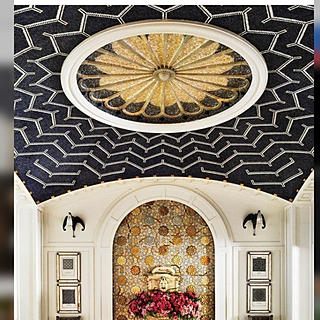Daylight in Architecture
- esta hasa
- Dec 20, 2017
- 3 min read
The main purpose of a building may be to accommodate the humans needs and functions, but since it is placed in outdoor spaces, part of the thinking process of the architect should be the conditions that the surrounding is offering. The architect can not control these conditions but can make possible for the building to " behave" as nature's elements, like daylight, " behave". Daylight is a vital element and there should be so that anyone inside the building can get the most of it, setting aside the fact that it can be replaced from artificial light.
Based on the solutions that architets have come into to enter the day light in the building, there are three types of openings:
1. The bright open hall, where light comes through the supporting columns of the roof or even in the example of Philip C.Johnson's house where light comes through the glass walls. Another problem that stands to be solved from the architect in this case is that the wrong quality of light may bring bad quality of it. Objects should be placed in the position where light falls from the side so that impressions of relief and texture will get perceive.
Based on this idea , what it can be understood is that the light used in modern theaters as a front ligt lacks on the amount of texture and shadow effec. Different from that, in the old ones the floodlighting created an unreal world bacuse of the good light coming from above.
2. The room with a skylight;
A good use of this light is the example of the Pantheon in Rome where light comes through the only opening on the center of the dome , but still the light gets reflected so that every corner gets illuminated. However, other examples of rooms with this daylight system offer a less shado, plastic and texture effect.
3. The room with light entering from the side. The best effect of this light gets perceived when light from different sources fall in the same direction. To control the daylight as their requirements, the dutch window was created, with four frames, each with its own shutter so that they could open the one that let light come in where they wanted to.
"Architecture is the learned, correct and magnificent play of forms under the daylight."- Le Corbusier.
With that being said , the architect speaks in the language of forms, whose realtion between each-other is detyduring the ideation process or even based on some utilitarian, learned rules. The final effect may be magnificent but it is all happening under the daylight.
Important role that color plays
In a building are forms the ones that create it ,but the use of colors identifies these forms in another aspect and based on the role that each color has, another message can be communicated. During the construction proces the kinds of materials which complete the requirements get selected, but indirectly this selection also determines the colors presented. Colors are an important element of the interior of the building since they determine the spaces and also the function that will take place, as colors effect in the way we may feel. The architect uses color as a mean to express something which not only adds understanding elements for the way that the composition is organized but also it may characterize the whole architectural work.








Comments